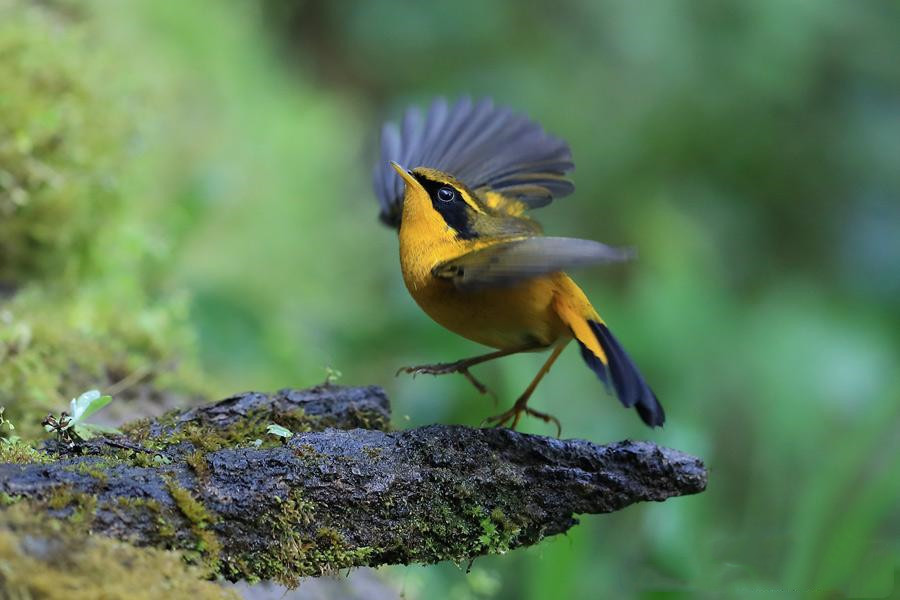
China Bird Watching Tips for Beginners
Identifying a bird can be challenging. Birds are active, energetic animals and you need a quick eye to spot as many details as possible in a short span of time. The obstacles are many—the light may be dim, you could have the sun in your eyes, or the bird may dive into a bush. So to stand the best chance of landing a name for a bird, you’ll want to know what to look for—what matters most and how to spend your precious viewing time.
1.KEEP YOUR EYE ON THE BIRD
When you spot a bird, don’t immediately try to flip through the pages of a field guide to identify it. Every moment of viewing time is precious. Keep your eye fixed on the bird and study it—absorb details of its markings, movements, song, feeding habits, and size. You may want to jot down notes or quickly sketch things that catch your eye. But don’t focus too much on your jottings, try to maximize the time you have the bird in view, as this is your time to study it and you don’t know how long it will be before the bird dashes off, out of sight.
2.LISTEN FOR CALLS AND SONG
Listening out for a bird’s vocalizations is simple but it’s also easy to forget to do. The odds are, if you don’t make a conscious effort to listen, you won’t remember the bird’s song and you’ll miss out on one of the best bird identification tools there is. The good news is that you can listen to a bird while you look at it—it’s easy to do both at the same time. Look for bill movements along with the calls you hear, just to ensure you’re associating the correct song with the bird you’re trying to identify.

3.ESTIMATE GENERAL SIZE AND SHAPE
A general picture of the bird, that is its approximate size and shape, will often give you many clues when placing it into the correct family of birds. Therefore, begin with an assessment of the bird’s overall appearance. What is the approximate size of the bird? It’s easiest to estimate size in relation to well know birds. For instance, is the bird you’re observing about the size of a sparrow? A robin? A pigeon? A crow? A turkey? Think in terms of silhouettes and try to get an inkling for its general body shape. Does it stand upright and walk with ease, or is it unsteady and awkward on land?
4.MAKE NOTE OF FACIAL MARKINGS AND BILL CHARACTERISTICS
After determining its general size and shape, then you’re ready to start noticing details. Start at the head first. Look for distinctive strips and patches of color including crown stripes, eye lines, nape color, eye arcs or rings. Does it have a black ‘hood’ on its head? Do its feathers form a crest atop its head? Also note the color and shape of the bird’s bill. How long is the bill in relation to the bird’s head? Is it straight or curved, conical or flattened?
5.LOOK FOR WING BARS AND TAIL SHAPE
Next look for details on the bird’s body, wings, and tail. Keep an eye out for wing bars, color patches, and markings on the bird’s body, when it is stationary or in flight. What color is its back and its belly? How long is its tail in relation to the bird’s body length? How does it hold its tail? Does it have a forked tail or is it square or rounded?
6.OBSERVE LEG COLOR AND LENGTH
Now study the bird’s legs. Does the bird have long legs or short legs? What color are its legs? If you can catch a glimpse of its feet, try and determine if its feet are webbed, or if it has talons. Some birds even have toes that arranged differently than others and if you’re fortunate enough to have a close-up view, see how many of its toes point forwards or backwards.
7.STUDY MOVEMENT AND FLIGHT PATTERNS
Observe the way the bird walks, how it holds its tail, or how it jumps from branch to branch. If it flies off, watch for a pattern in its flight, does it swoop up and down in gentle arcs with each wingbeat or does it glide gently and steadily?
8.DETERMINE FEEDING HABITS
If you can, try and determine what the bird is eating or how it feeds. Does it cling to a tree t trunk and dig at the bark looking for insects? Or does it forage across your lawn, tilting its head to watch for insects scurrying amongst blades of grass. Does it sway its bill through the water at the edge of a pond?
9.DESCRIBE HABITAT, REGION, AND CLIMATE
Make note of the habitat in which you have observed the bird. You can do this even after the bird has flown off, so it’s best to leave this step until last. Did you spot the bird in a wetland or woodland? Are you in an urban setting or a farm field? Each species of bird has a typical region that they inhabit and making note of the region you’re in when you observe a bird can narrow the possibilities when you try to identify that bird. Also, birds migrate and species composition in a region changes throughout the seasons, so make note of the time of year (or specific date you observe the bird).
10. RECORD YOUR OBSERVATIONS
After viewing the bird, jot down your observations for later reference. From markings to behavior, write down anything you noticed, it can all help when you later sit down with a field guide to confirm the bird’s species. Also, note the location, date, time of day of the siting.
















